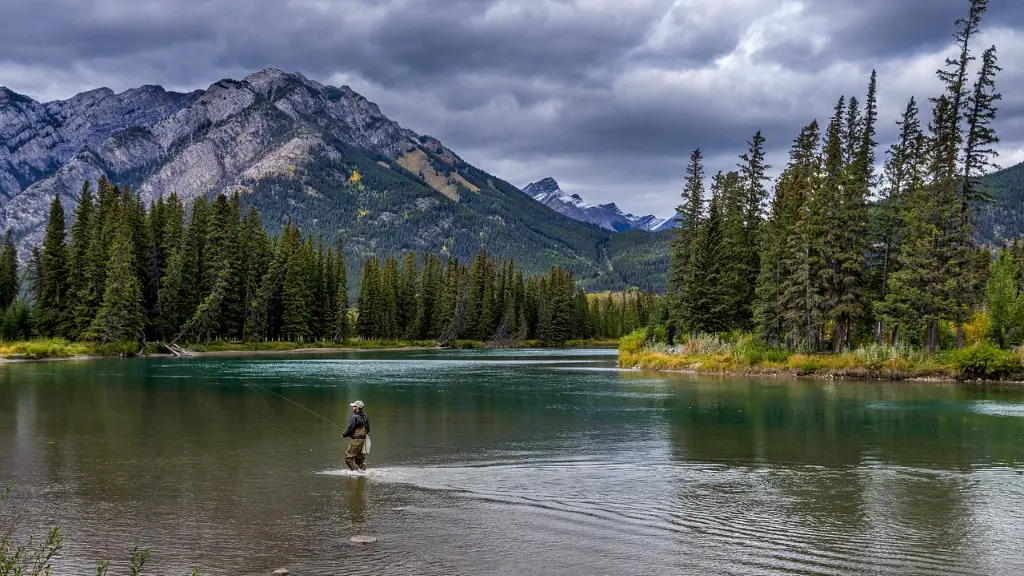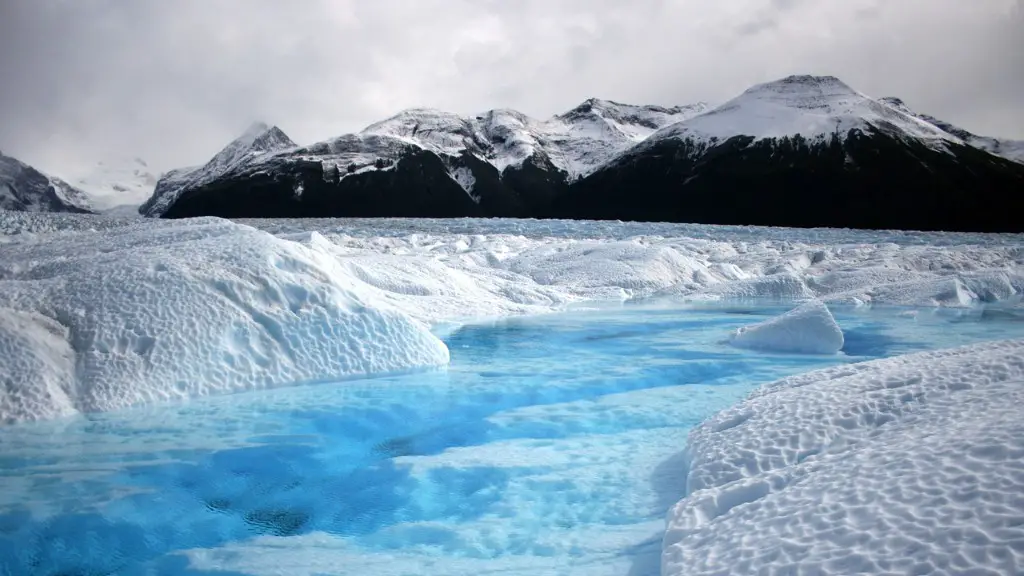The Mississippi River is a trans-boundary river in the United States, with its source near Lake Itasca in Minnesota and its mouth off the Gulf of Mexico in Louisiana. Spanning 2,348 miles, the Mississippi River is one of the world’s longest rivers and travels through 10 American states. It is not only a transport and recreational waterway but also an important economic resource.
The wide stream of the Mississippi River collects water from the Rocky Mountains, Midwest and Great Plains regions and stretches across the states of Minnesota, Wisconsin, Iowa, Illinois, Missouri, Kentucky, Tennessee, Arkansas, Mississippi and Louisiana. Not only is the Mississippi River a major artery for transportation and recreation, but it also serves as an important commercial waterway that supports industry, trade and recreation.
The Mississippi River serves as an ecological, economical, and cultural resource, providing an abundance of environmental benefits such as habitat for wildlife and plants, and it also serves as a recreational hub for anglers, videographers and boaters alike. It also acts as a buffer for flooding and water control. The river supports urban areas, industry and agriculture through hydropower energy, transportation and irrigation.
With its extensive network, the Mississippi River has played an integral part in civilization and global trade since the beginning of human settlement in the United States. It enabled transportation of fuel, food, trade goods, passengers and supporters to many regions. In the 19th century, the river became part of the United States’ interstate commerce, with towboats and barges pushing massive amounts of cargo to the Gulf Coast.
The Mississippi River is a well-known fixture in American culture and history, with hundreds of books, films, plays and songs that explore its place in American life. This celebration of the river has inspired multiple generations of explorers to connect with its landscape, culture, and spiritual richness. Numerous events, political protests, commercial journeys and religious pilgrimages have been conducted on its banks.
Today, the Mississippi River continues to traverse a vast region and its wetlands are alive with abundant populations of fish, birds, mammals, and other organisms. The strategies that people have used to manage the Mississippi River also highlight the dynamic nature of the environmental, cultural and historical forces that shape the river and its associated basin.
Environmental Impact
The Mississippi River is the most important waterway in the United States. The river transports more water than any other river in the country and is an integral part of the US economy. As the most vital portion of the US’s water-transportation system, it influences the environment of the states with which it comes into contact.
The Mississippi River basin is home to a variety of ecological habitats, including wetlands, floodplains and swampland, which are important for the health of the river and the species that rely on it. Unfortunately, the river faces increasing pollution from agricultural runoff, industrial operations and sewage treatment facilities. The river also faces water quality problems from sedimentation due to erosion, ice formations and flooding.
In recent years, many initiatives have been set out to reduce the environmental impacts of the Mississippi River. The establishment of the Mississippi River Commission has worked on reducing pollutants, preserving habitat and dredging for navigation. Additionally, government organizations have implemented plans to support sustainable management of the river and its related ecosystems.
Cultural Impact
A large number of countries, states and cities are located alongside the Mississippi River, tracing its more than 2,500 miles upstream and downstream. It is not only a river of historical and cultural significance, but also a vital resource for millions of people. Millions of Americans rely on the river for their food and livelihood through agriculture, trade and tourism.
The music and performance arts of many countries, particularly the US, have been shaped by the Mississippi River, with songs and stories inspired by life along its banks. As a result of its notoriety, the Mississippi River has become a symbol of American identity. People from all across the country seek opportunities to experience the river and its environs.
The banks of the Mississippi are steeped in history and culture. Major cities like Baton Rouge and New Orleans are home to important cultural monuments and traditional landmarks, drawing visitors from all around the world. These cities represent the diversity of heritage that is connected to the river, from the music of jazz to the region’s Creole and Cajun cuisine.
In addition to the cultural and economic benefits of the Mississippi River, it has also become a major source of recreation for many Americans. Every year, thousands of people go to the river to enjoy fishing, boating, camping and sightseeing. Many of these activities provide access to local cultures and heritages, allowing people to engage in unique cultural experiences.
Ecological Significance
The Mississippi River provides a variety of natural services to its basin, including water storage, habitat for aquatic life, flood control and temperature regulation. It is an important source of nitrogen, phosphorus and natural sediment, adding vital fertility to adjacent farms. In addition, the river helps regulate water supply and mitigate drought in the region.
The ecology of the Mississippi River basin is extremely diverse, with a range of habitats and species of birds, fish, mammals, and reptiles. The river basin supports one of the most significant fish migrations in the world, with numerous species of fish swimming from the headwaters to the Gulf of Mexico. Furthermore, the Mississippi River is home to over 200 species of fish, including some of the largest catfish ever harvested in the US.
The Mississippi River’s wetlands and floodplains also provide some of the most important ecological services in North America, with the capacity to filter pollutants and store excessive water. These areas act as nurseries for many species of aquatic life, providing essential habitat for spawning, food sources and cover from predators. In addition, wetlands and floodplains also help reduce the risk of flooding and soil erosion.
Navigation along the Mississippi River has been important for centuries. It supports barges supplying bulk goods like coal and ethanol, and enables cargo to reach the Gulf of Mexico. Today, the Mississippi River is the nation’s busiest inland waterway and is the main route for barge traffic between New Orleans and Minneapolis.
Due to the extensive river network and its many locks and dams, boating is quite popular along the Mississippi River. The Upper Mississippi River is known especially for its recreational uses, with many campgrounds and tourist attractions. Boaters can travel along the river and enjoy scenic natural beauty while stopping at various towns along the way. The river has also become a major tourist attraction, with many cruises and recreational activities available onboard.
The U.S. Army Corps of Engineers is responsible for maintaining, improving and operating the locks and dams along the Mississippi River. This includes the maintaining of commercial navigation channels and river depths that allow goods to be shipped between ports and industries. The Army Corps of Engineers, along with other agencies, have helped to keep the river navigable for decades.
Conservation
Today, the river faces many challenges and threats, including sedimentation, erosions, habitat destruction and pollution. To combat these threats, states, municipalities and conservation organizations have partnered to protect and restore the river system. This includes restoring habitats, reducing polluted runoff and improving navigation.
The Upper Mississippi River National Wildlife and Fish Refuge was established to conserve, protect and enhance the fish, wildlife and plant resources and their habitats in the upper Mississippi River. Its mission is to ensure the future of these resources in the basin, while providing access and opportunities for compatible public use. Similarly, the Lower Mississippi River Conservation Committee works to conserve and enhance the natural, historic and recreational assets of the Lower Mississippi River.
In conclusion, the Mississippi River remains a vital economic and ecological resource that is vital to humans, wildlife and the environment. With a multitude of ecosystem services, the river is essential for both recreational and economic benefits. Furthermore, conservation efforts are necessary to continue to bring attention to the importance of the river and its ecosystems.





